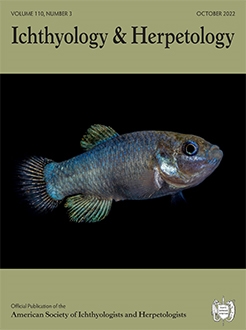The sole wild population of the endangered Devils Hole Pupfish, Cyprinodon diabolis, has declined to fewer than 40 individuals twice since 2006, prompting increased recovery efforts. The U.S. Fish and Wildlife Service's Devils Hole Pupfish recovery plan stipulates two reproducing captive populations, though, historically, propagation efforts have yielded little success. To address information deficits in reproductive behavior and ecology, from February–December 2010 we investigated environmental factors associated with spawning activity of C. diabolis in Devils Hole, Nevada, USA. An underwater camera continuously monitored a portion of a shallow, submerged rock shelf used for spawning. Select biotic, abiotic, and physico-chemical parameters were monitored continuously throughout the year. Water level and precipitation data provided by the U.S. National Park Service identified disturbances from earthquake-induced seiches and storm-induced flash floods. Zero-inflated Poisson regression provided a model with 28% predictive power with algal cover, light energy, and seiches as the three strongest predictors among tested factors in spawning behavior of C. diabolis in the wild.
How to translate text using browser tools
31 August 2022
Environmental Factors in Spawning of Wild Devils Hole Pupfish Cyprinodon diabolis (Teleostei: Cyprinodontidae)
Ambre L. Chaudoin,
Olin G. Feuerbacher,
Scott A. Bonar,
Paul J. Barrett
ACCESS THE FULL ARTICLE

Ichthyology & Herpetology
Vol. 110 • No. 3
October 2022
Vol. 110 • No. 3
October 2022




